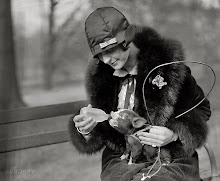While the war of currents raged within industry, the use of steam power was becoming obsolete. A transit company by the name of Brooklyn Rapid decided to apply the use of electricity to power their railways. The electrification of the railroad, which connected Brooklyn to Manhattan, helped to bring commerce and tourism into the southernmost part of Brooklyn, home to the famous Coney Island. Known for their amusement parks and sideshow attractions, Coney Island was a popular destination for families, couples and curious persons alike. Within the peninsula, constructed alongside Steeplechase Park, and Dreamland sat the magnificent Luna Park. Thousands flocked daily through the elaborate gates to take a "Trip to the Moon" ride the "Witching Waves", or even sit atop an elephant and take a tour of the grounds.
At the time, elephants were a rare commodity, even within the entertainment industry. Coney Island's Luna park, however, was lucky enough to posses several, including "Topsy", the Asian elephant. Topsy had been domesticated within Adam Forepaugh's menagerie. The Forepaugh circus, although defunct prior to the creation of Luna Park, had been PT Barnum's top competition from the 1870's to the 1880's. While Barnum billed his circus as an honest act and prided himself on his showmanship, Adam Forepaugh was a con-man and a cheat. Not only did he swindle his customers out of their cash and belongings, he also treated his animals with similar contempt and disregard. At points, he not only overlooked, but encouraged mistreatment of the animals in his care in favor of better ticket sales. As a result, many of his menagerie were hardened and aggressive specimens, and a danger to the general public.
Topsy was unfortunately no exception. In her brief stint within Luna Park, she continued to be abused by her trainer, who would mercilessly beat her with a bull-hook and feed her lit cigarettes. After three years of similar treatment, Topsy had become extremely bellicose and had killed three men, the last of which was her intolerably cruel trainer. The owners of Luna Park, Thompson and Dundy, made the decision to put the creature down. Like typical showmen, they publicly announced the execution of the "killer elephant" and planned a public hanging to dispose of the animal.
Still incredibly active in his pursuit to defame Nikola Tesla, Thomas Edison saw an opportunity within this tragedy. He offered to utilize alternating current to slaughter the elephant, in a final attempt at demonizing his competitor. In 1903, Topsy was 28 years old. She was led to a platform in the center of the park, her feet staked in place. Handlers fed her carrots laced with copious amounts of cyanide before over six thousand volts of alternating current coursed through her body. She fell to the ground in a magnificent heap, dead within 15 seconds.
Edison, in all his entrepreneurial glory, did not even attend the execution. Instead, he sent a team to the park to carry out the deed and document the entire incident on film. He soon lost the battle for direct current, having been beaten in the marketplace by his competitor through straightforward and scientific means. Luna Park burned to the ground not long after, and despite several attempts to rebuild, was claimed by a third and final fire in 1946.
